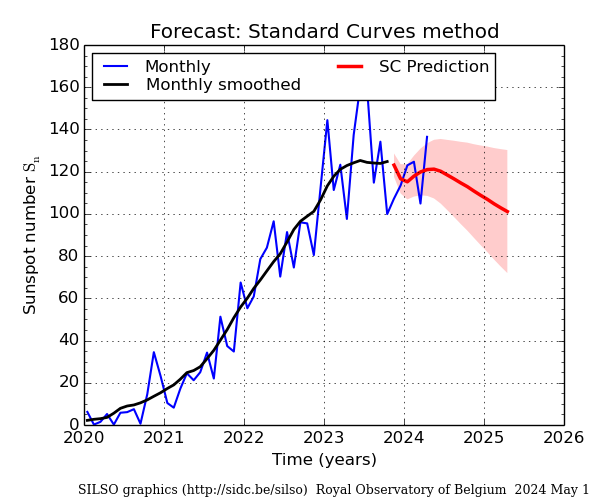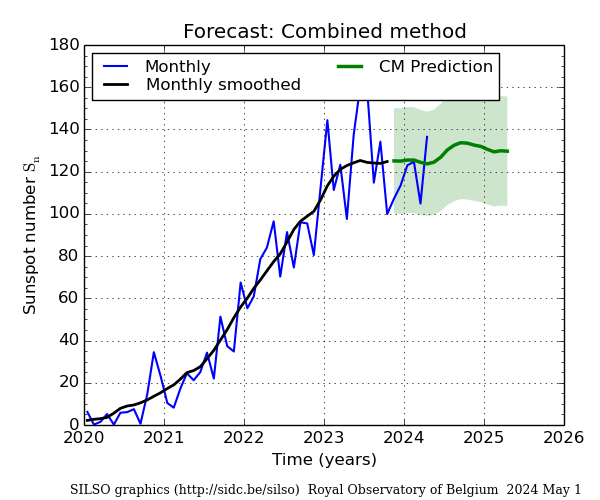Home
HF choke balun homebrewing (1:1 current mode balun)
- Details
- Written by: ik1hge
- Category: Electronics and radiofrequency
- Hits: 8585
Almost all of us know that "BAL-UN" is the acronym for "BALanced-UNbalanced", thus we grasp the role of the device that bears the name of "balun" - allow to connect a generator having an unbalanced output (asymmetrical in respect to a reference), as a radiofrequency transmitter with a coaxial transmission line, to a balanced load (symmetrical in respect to the reference), as a dipole antenna or a lot of other kind of antennas, but not a Ground Plane one. The use of a balun let us avoid some drawbacks that would arise if we connected the unbalanced output directly to the balanced input. Actually, a balun is normally bi-directional, i.e. it allows to connect a balanced generator (the same antenna, but now used to receive) to the unbalanced load (the coax connected to the input stage of the receiver), though this function is generally much less promoted in amateur radio literature.
Well, let's come to the point. I've just built a choke bal-un, or current balun (with 1:1 impedance transformation ratio, i.e. it's just a balun, not an impedance adapter). I just want to share the pictures that document my work, I hope that they might be useful to someone else and, why not, that someone will send me his comments and suggestions trough the "Contacts" module of this web site. Honestly speaking, there is nothing new in this article, it just talks about one of the several (thousands? Millions?) realizations of a HF choke. However, I'm sure that nobody would come to this unknown web site by chance, and that most of you are here because you are looking for instructions and pictures to be used as a starting point to homebrew your balun. So, read my article and also some of the other articles that you'll find around on the internet and in the literature. I spent a lot of effort in order to make a tutorial that suits to individuals who don't have specific technical skills, commenting and showing all the mounting operations, including the trivial ones...
Let's build a wide band choke balun for HF, with a good hope that it'll work on 50 MHz band too. We'll realize it with 11 turns of RG-142 coax cable wound on two overlapped toroids, brand Amidon model FT240-43. Why exactly 11 turns? The choice is based on experimental data published by G3TXQ (SK), who gave the figures for 9 turns; in order to compensate a part of the leakage flux due to the much higher stiffness of the RG-142, when compared to the RG-58 used by G3TXQ, which results in less tight turns around the core, I've decided for 11 turns instead of 9. This balun should withstand a power of few kW, but I would not know how to verify that, I can run only 100W![]() .
.
Needed material and equipment:
- A piece of RG-142 coax, let's say about 1,3 meters. The price is between 7 and 11 Euros/m in a shop (I paid it 5 Euros/m at a fair)
- Two Amidon toroids FT240-43; price about 9-10 Euros each
-
One panel mounting female UHF connector (or, if you prefer, panel mounting N type female connector); price starting from 2 Euros
Read more: HF choke balun homebrewing (1:1 current mode balun)
Sunspots number forecast and hf propagation prediction
- Details
- Written by: ik1hge
- Category: News
- Hits: 3640
To state it simple, more or less we have understood that the propagation on amateur radio bands, especially those in the HF range, depends on the quantity of sun spots (Sn, Sunspots number): more the sunspots (higher Sn) means better propagation of electromagnetic waves and higher maximum usable frequency (MUF). The wise Old Men tell us that this sunspots number or, better, its daily and monthly mean, in the long term has a cyclic trend, that is it reaches a peak in a relatively short time, and then it has a long decay, which lasts several years, with a low sunspots number resulting in mediocre propagation. Such a trend, is recurring roughly every eleven years as we observe in the following chart showing the monthly mean susnspots number in the latest five cycles.
 Poor us, we are now living the long low sunspots tail of the 24th solar cycle - few sunspots, low propagation…
Poor us, we are now living the long low sunspots tail of the 24th solar cycle - few sunspots, low propagation… ![]() What we all wonder is: when the sunspots number is going to grow again? In other words: When is the new solar cycle going to begin? And, even more interesting: When is the propagation going to improve so that we could finally have DXing from our normal QTHs, with affordable power and antennas? To answer those questions, we get some help from the predictions published by prestigious research institutes.
What we all wonder is: when the sunspots number is going to grow again? In other words: When is the new solar cycle going to begin? And, even more interesting: When is the propagation going to improve so that we could finally have DXing from our normal QTHs, with affordable power and antennas? To answer those questions, we get some help from the predictions published by prestigious research institutes.
Here following, I report two graphs, made available by the Royal Observatory of Belgium - Brussels - that show:

Above: predictions dated 2019 January 8; below predictions udatrd monthly. Credit: SILSO data/image, Royal Observatory of Belgium, Brussels.


G3TXQ Silent Key
- Details
- Written by: ik1hge
- Category: News
- Hits: 2370
With great sadness I am reporting that, after a long fight against illness, on December 30th, 2018 Steve, G3TXQ passed away. Steve was, and still is a very popular radio amateur all over the world for various reasons. Here, I want to remind all of us his dramatic inprovement of hex beam antenna and his hard work about baluns.
His death is a tremendous loss to the world wide amateur radio community.
I offer my condolences to Steve's family.
Here following, the announcement appeared on Steve and his wife's website:
Replacement of RJ45 modular mic connector
- Details
- Written by: ik1hge
- Category: Non categorizzato
- Hits: 2454
Broken connector and damaged mic chord
| Wire color | Function |
| Black | FAST |
| White | GND |
| Red | PTT |
| Yellow | MIC |
| Copper | MIC GND |
| Blue | 5V |
| Not connected | Up |
| Not connected | Down |

- Crimper for RJ45 modular connectors (very cheap in a DIY shop)
- RJ45 connectors (I bought ten pieces for 90 Euro-cents in a DIY shop)
- Cutter
- A caliper or whatever you have to measure a length of 15 mm
- Soldering iron
- Soldering wire
- Five minutes of time

Remove the thick black sheeve for a length of 15 mm. Twist the bare copper wire to make it a little stiffer. You might want to add a very little drop of solder to its tip. Not too much because, if the wire becomes too hard, it won't be crimped. If you removed the connector hood from the cable, put it back where it was.


Enjoy amateur radio!
Source: ik1hge.com
For reproduction of text and images, cite ik1hge.com and provide backlink to this website.
Emergency earthquake Abruzzo 2009 (Italy)
- Details
- Written by: ik1hge
- Category: News
- Hits: 2055
There we were. October 2009, operators in the radio shack Direzione Comando e Controllo, Guardia di Finanza. Coppito (AQ). Greetings to my friends from Friuli Venezia Giulia (ARI Udine and Monfalcone, if I remember well) and to my friends from Piedmont, ARI Turin.

HEXBEAM
- Details
- Written by: ik1hge
- Category: Antennas
- Hits: 1900
I am surveying the Hexbeam antenna market. For the moment, I've found:
https://www.g3txq-hexbeam.com/ (MW0JZE)
http://www.eantenna.es/?page_id=3146 (acquired by Wimo)
Italian radio amateurs now on 60 meters band (5 MHz band)
- Details
- Written by: ik1hge
- Category: News
- Hits: 2328
At best of my knowledge, starting on November 3rd, 2018, italian radio amateurs will be allowed to transmit on 60m band with maximum 15 W e.i.r.p., from 5351.5 kHz to 5366.5 kHz. Contacts made before November 3rd, 2018 should be neither legal nor recognizable as DXCC credits, records, awards, etc.
Italy is on 5 MHz band too!
ER/IK1HGE QSLing
- Details
- Written by: ik1hge
- Category: Moldova ER/IK1HGE
- Hits: 1476
UPDATE 2018-11-05
The QSL shop shipped all the requested QSLs to me. I filled out all the QSLs to be sent out via bureau. I hope that the local bureau sevice will ship the cards to the national service by the end of the year. Im sorry but I can't send QSLs to countries that do not have a bureau service. Wherever I realized that the card recipient is a "Direct only" or a "LotW" one, I did not fill out the QSL card; for those stations, I'm "Direct only" as well. ER/IK1HGE is not on LotW.
I replied to further direct QSL requests and I sent the so called green stamps back to the sender. At present, there are no outstanding requests. Obviously, I'm still available to reply to any new direct request.
Unless unexpected events occur, all activities for 2017 and 2018 operations from Moldova are completed and there will not be any further update.
Thank you everybody!
73's de ER/IK1HGE Roberto
UPDATE 2018-10-08
The print shop gave me some laser printed QSLs that I used to reply to all direct QSL card requests received untill now. So, all direct cards requested have been sent out on Oct 6th, 2018. I still have a few cards for incoming requests.
For cards via bureau: I'm still waiting for the print shop to run the production lot and deliver the 1000 cards to me. I know you are patient, otherwise you wouldn't choose the bureau service ![]() .
.
UPDATE 2018-09-11
ER/IK1HGE's logbook is complete and uploaded in Club Log. Read here below and then check your call in the module here aside (on the right).
ORIGINAL POST 2018-09-08:
I'm almost done with uploading ER/IK1HGE's logbook in ClubLog. Only three days of operations are still missing in the logbook, however I will upload the remaing data soon. Verify if you are in the log through the Log search "ER/IK1HGE" in the right column of this web page and, if you think you should be in the log but the system says that you are not, then send me the qso data through the "Contacts" page of this web site, it is surely mi fault when copying the notes from the minute to the data base.
I will notify all the progresses in QSLing in the "Moldova ER/IK1HGE" pages (see the Menu here on the right).
73's
ER/IK1HGE
- Yaesu FT-450AT for sale
- ER/IK1HGE 2018 operations completed
- Online DXCC - how much is it?
- High voltage anode power supply 3500 - 4000 V
- ER/IK1HGE Moldova
- The legend of the letter to ARRL to subscribe to Logbook of the World (LotW)
- How much does a Skylab antenna gain? (alias Starduster M-400)
- 70MHz 4 elements Quagi antenna
- Quagi 8 elements 432MHz
- Moncalvo amateur radio flea market 2018
- ik1hge.com on the road again!
Page 3 of 5








